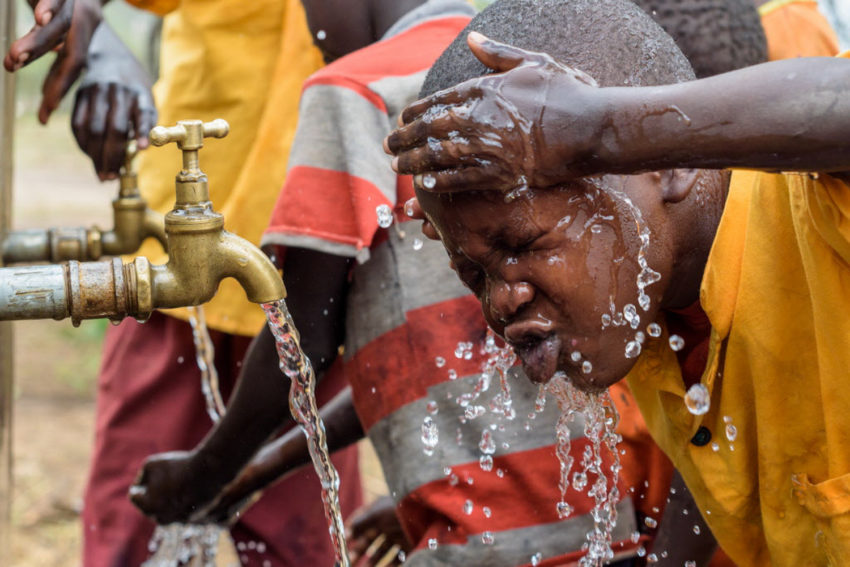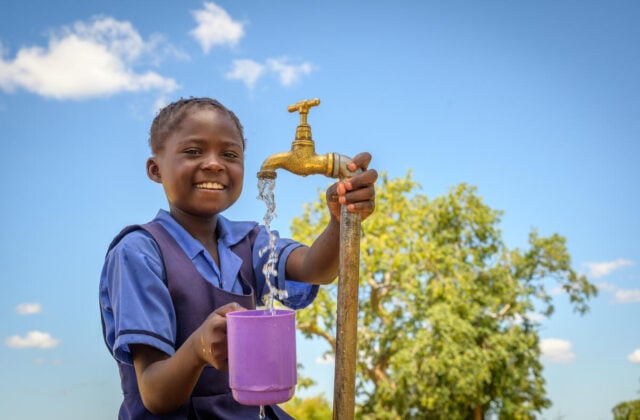For impoverished children, access to clean water not only restores health but also opens doors to educational opportunities and a future to pursue their God-given potential. For more than three decades, World Vision has worked in water, sanitation, and hygiene (WASH), originally starting with small water projects. Today, World Vision is reaching one new person every 10 seconds with clean water and one new person with handwashing promotion as well. Here are five examples of our water work around the world.
1. Gravity-fed water pipeline
In the northern Kenyan community of Kesot, clean water rushes from a gravity-fed water pipeline system. A hilltop dam protects and diverts spring water and the pipeline — which community members helped build and now help maintain — delivers it to homes and the three primary schools. Students, like Cheru, can attend class because they spend less time gathering water and because the schools are outfitted with large water tanks, spigots, latrines for boys and girls of differing abilities, and handwashing stations. This system will last because the community owns it — the water committee collects user fees to hire local workers, who have been trained by World Vision, to repair any breakdowns in the system to ensure water is flowing for years to come.
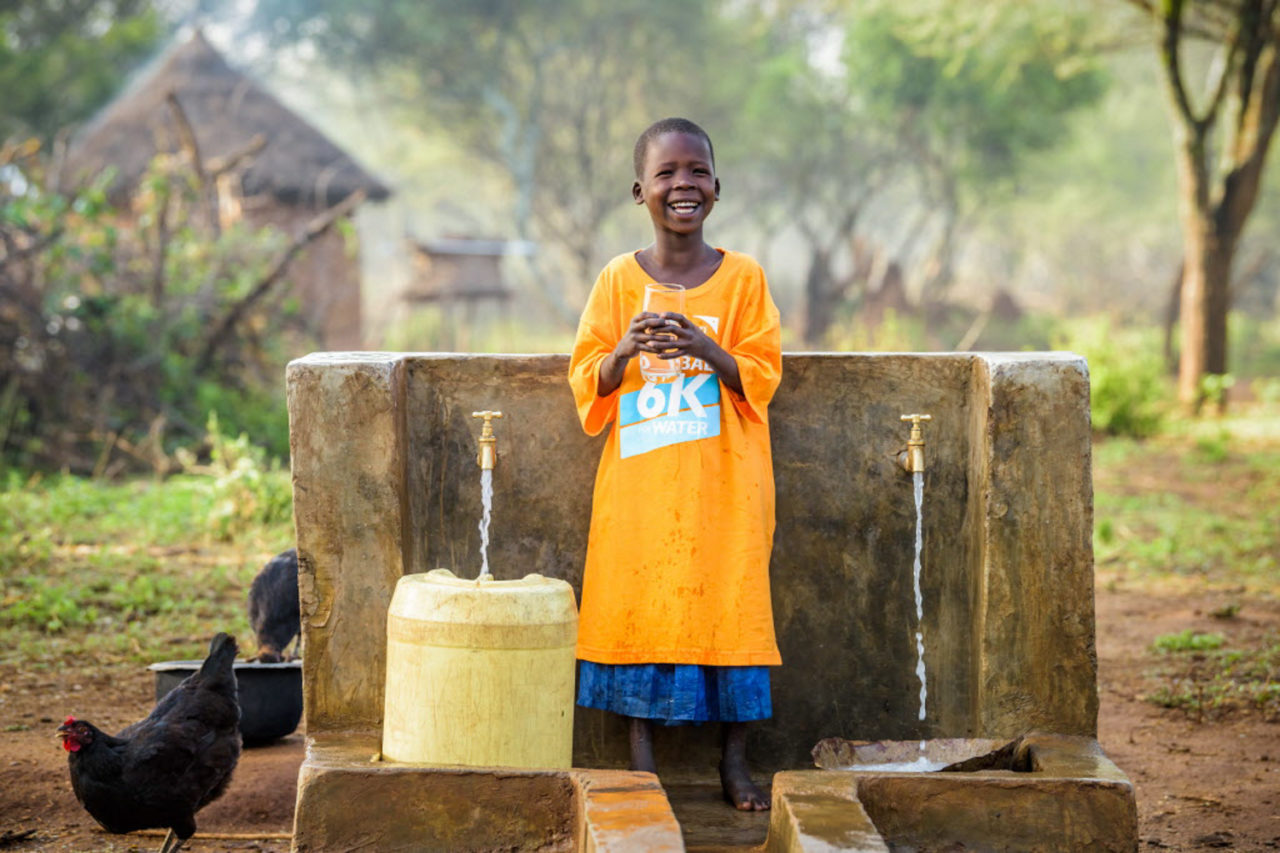
2. WASH UP! teaches good hygiene
The WASH UP! program trains educators and community leaders to use play-based learning materials to teach children about good hygiene practices.
This goes a long way to reduce diseases like COVID-19 and cholera, and illnesses like diarrhea. On their way to becoming health superstars, students play games and activities featuring Sesame Street’s Elmo and 6-year-old Raya. It helps children identify healthy hygiene habits, such as washing hands with soap and how to use the restroom. World Vision and Sesame Workshop pioneered this program in rural Zambia and have now expanded to 14 countries, including Afghanistan, Ghana, Honduras, India, Iraq, Jordan, Lebanon, Malawi, Mali, Niger, Rwanda, Syria, Zambia, and Zimbabwe. In 2020, at least 49,000 child participants learned proper sanitation and hygiene practices as well as simple ways to share this knowledge with others through WASH UP!
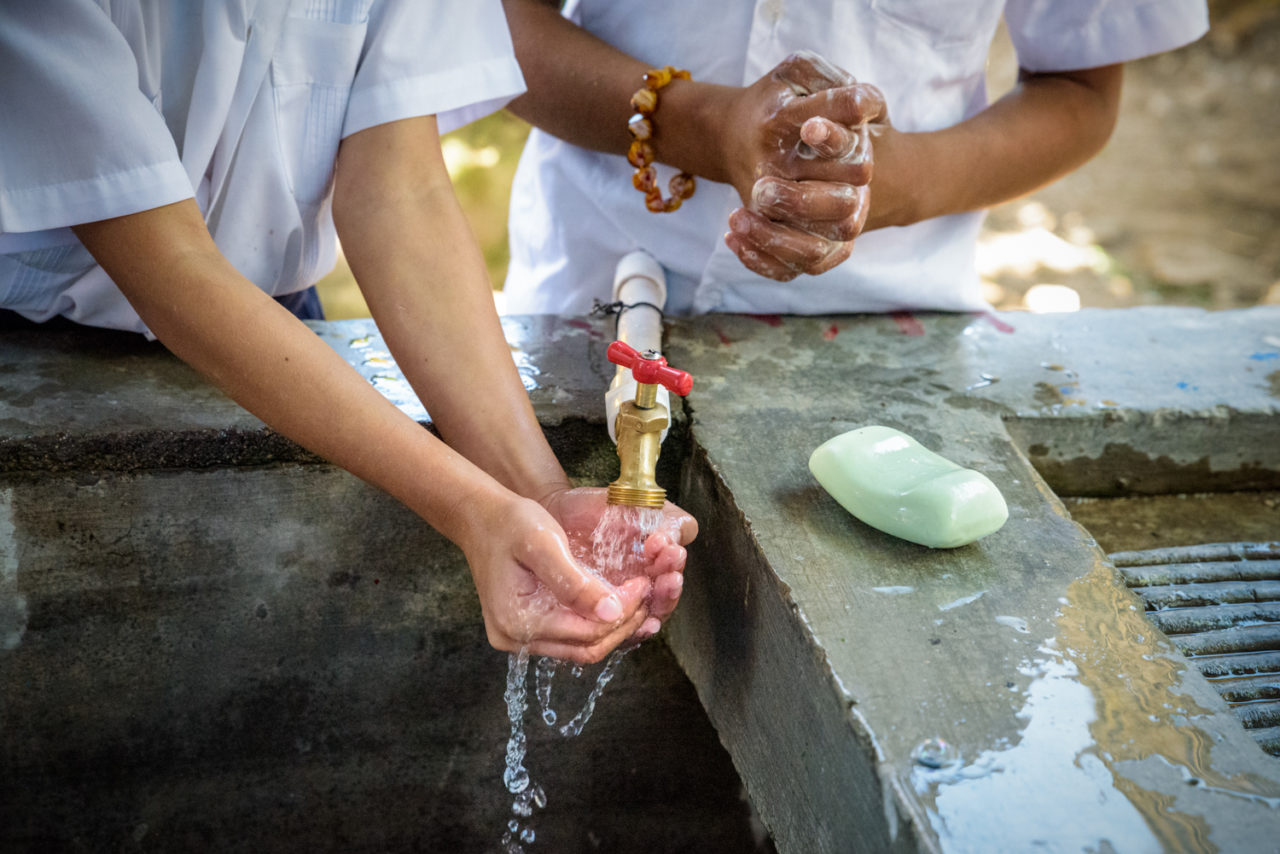
3. Rehabilitating community water systems for Syrian refugees
Now in its 11th year, the war in Syria has displaced millions of people — half of them children. Nearly 11.1 million people in Syria need humanitarian aid. Damaged or destroyed water pipelines and sanitation systems have left families vulnerable to sickness and disease. World Vision rehabilitates critical water infrastructure, like pipelines, pumps, storage tanks, and taps, in hard-hit areas. We provide clean water access and sanitation facilities to Syrian refugees and promote good hygiene to refugee children in Jordan, Lebanon, and Iraq. Our goal is to reach 6 million people affected by the crisis with clean water and provide 200,000 people with functioning sanitation and handwashing facilities.
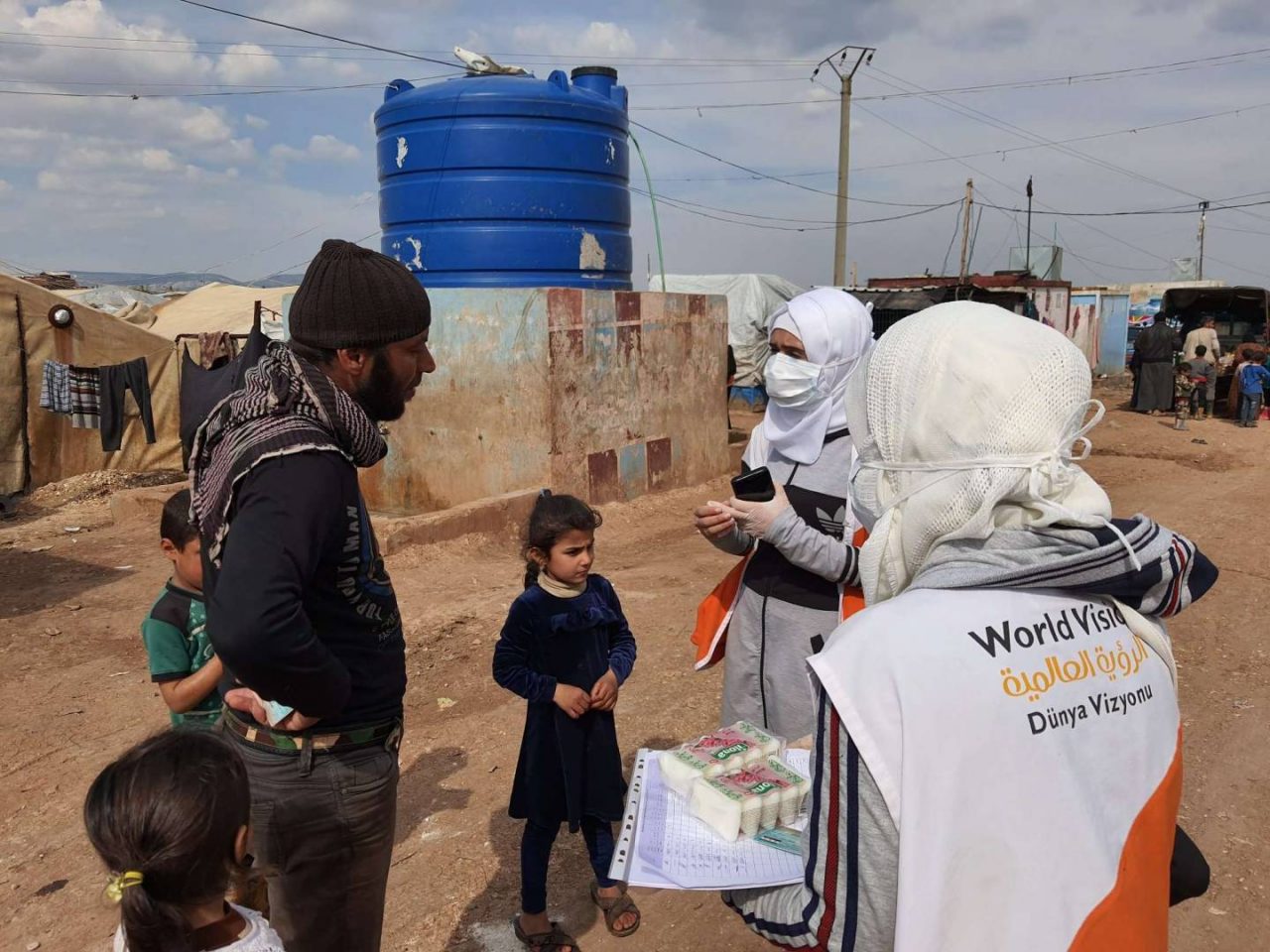
4. Water systems provide water for cleaner medical clinics
In Mali, one in 29 women have a chance of dying during childbirth over her lifetime — compared with a one-in-3,000 chance in the U.S. Clean water and improved sanitation at medical facilities are critical for patients and workers in efforts to prevent the spread of diseases. Facilities in rural, developing areas often lack the necessities like running water, functioning toilets, and handwashing stations. That’s why World Vision prioritizes efforts to develop water systems, provide necessities, and train health workers in Mali and dozens of other countries. Even the smallest of improvements lead to cleaner facilities and better outcomes for mothers and newborns.
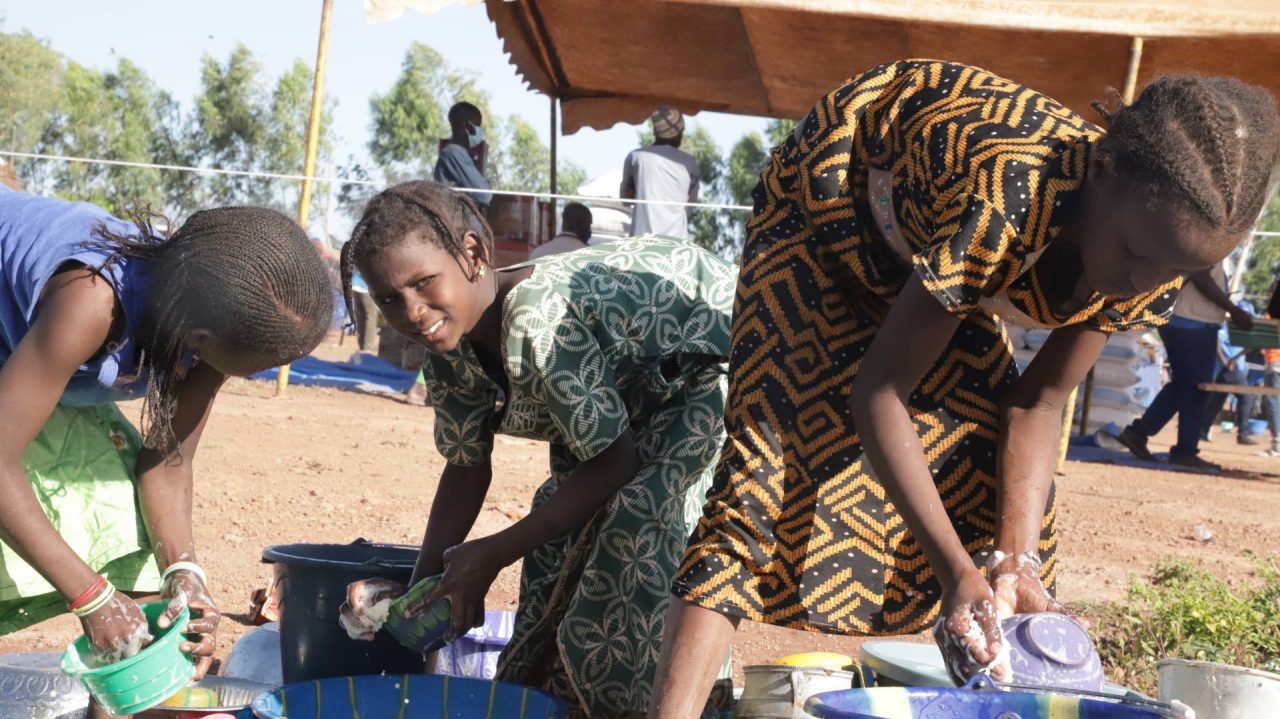
5. Solar-powered, reverse-osmosis water filtration
Access to clean water in northwestern Afghanistan is improving children’s health and education, strengthening communities, and helping protect the environment. Reverse osmosis is the only solution available for highly saline groundwater in Afghanistan. World Vision has developed a community-managed, solar-powered, reverse osmosis water system with ultrafiltration to treat water salinity. In the past two years, World Vision has constructed 14 reverse osmosis systems. All completed water systems are operated and maintained by community management groups and local water technicians. Each system can produce 30,000 liters — nearly 8,000 gallons — of water per day, giving the potential for $38,000 in water-user revenue generation per year, a significant annual profit for communities.
